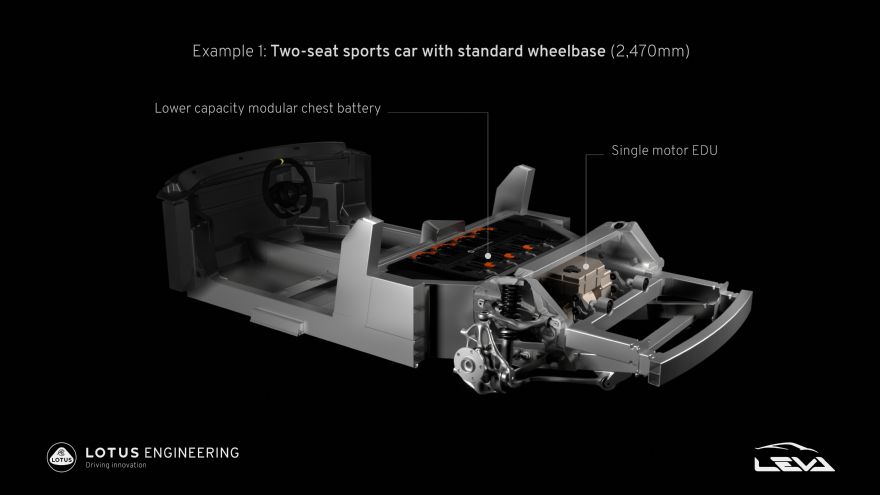
Just weeks after
Lotus confirmed the company will be launching a new family of electric performance cars, it has given a world premiere to the new lightweight chassis technology that will underpin the range.
The new structure has been developed through Project LEVA (lightweight electric vehicle architecture). Announced by Lotus in October 2020, this is a research programme aimed at accelerating the development of all-new lightweight structures for next-generation battery electric vehicles (BEVs).
Furthermore, Lotus says the structure developed through this project will be integrated into the company’s new architecture for electric sports cars. “The rear structure is 37% lighter than that on the Lotus Emira V6, which means the company now has the ‘blueprint’ for the next generation of electric sports cars, for future Lotus products and for the Lotus Engineering consultancy to commercialise.”
A new animation from Lotus reveals how the technology will form part of the new electric sports car chassis, illustrating the ‘versatile nature of this all-new Lotus-developed vehicle architecture, which is fully adaptable to provide a platform for a range of EVs with variable layouts, wheelbase lengths, battery sizes and configurations’.
As the animation shows, all three layouts feature a common lightweight die-cast rear sub-frame with multiple interchangeable components. This Project LEVA innovation means a single vehicle architecture can accommodate two different types of battery configurations: a ‘chest’ layout, where the modules are stacked vertically behind the two seats and suitable for vehicle types where a low overall ride height and low centre of gravity are required; and a ‘slab’ layout, where the modules are integrated horizontally under the cabin for vehicles where a higher ride height and a taller overall profile is required.
Funding for the project came in part from the Advanced Route to Market Demonstrator programme (ARMD). Awarded by the UK Government’s Department for Business, Energy and Industrial Strategy (BEIS), the programme is delivered on behalf of the Advanced Propulsion Centre (APC) by Cenex.
Project LEVA has been led by Richard Rackham, Lotus’s head of vehicle concepts who worked on the ‘revolutionary development’ of the extruded aluminium Lotus Elise architecture 25 years ago. He said: “Project LEVA is as revolutionary now as the Elise architecture was in 1996. In true Lotus spirit, significant weight savings have been achieved throughout, with a focus on ultimate performance, efficiency and safety being engineered into the structure from the outset.
“For example, by utilising the vehicle structure as the battery enclosure, having an integrated electronic drive unit (EDU), eliminating bolt-on subframes and optimising the multi-link suspension components.”